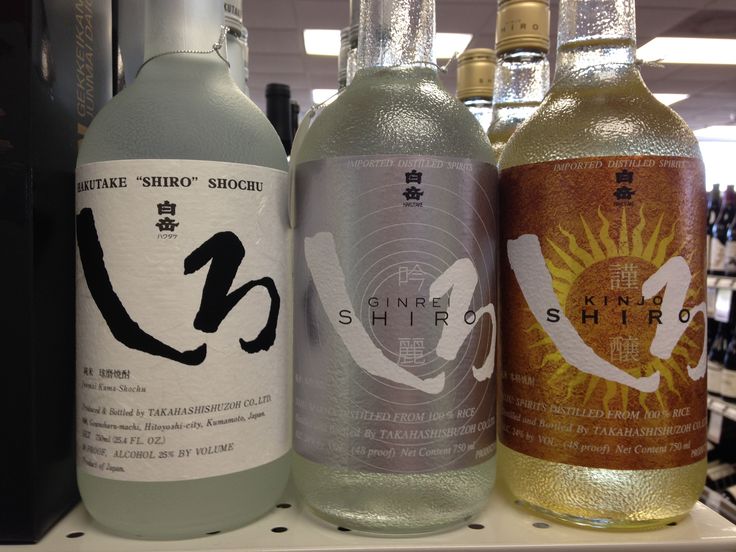Discovering Shochu: Episode 6 – Kome (rice) Shochu
Kome Shochu is said to be the original – the first shochu ever made. This month, DISCOVER shochu will feature the history, characteristics, food pairings and serving suggestions for Kome Shochu.
There are different theories of how Kome Shochu came about, but the most accepted version is that it started during the 16th century in the Kuma region of Kumamoto Prefecture where rice cultivation flourished.
Kuma region’s Hitoyoshi basin has the ideal condition for rice cultivation to thrive. (1) It is surrounded by high mountains, (2) has fresh, clean water flowing from the mountains, and (3) has highly varying temperature – warm during the day and cool night time temperature. These conditions produce rice suitable for making Kuma Shochu, the representative of all Kome Shochu.

Furthermore, Kome Shochu can be called Kuma Shochu only if these three requirements are met:
1) Rice is the only raw ingredient used.
2) Moromi (Rice Mash) is prepped using underground water from Kuma region of Kumamoto Prefecture.
3) Shochu is distilled and bottled with a single distillery machine in the Kuma region of Kumamoto Prefecture.
Today, there are only 28 sake breweries making Kuma Shochu, of which many are in Hitoyoshi City.
Kome Shochu made only with rice were originally characterized by a full and deep flavor with elegant sweetness. However, after the war, with the advancement of rice milling technology, incubation techniques for yeast, and the vacuum distillation technique introduced during 1970’s, the production of Kome Shochu with high Ginjo aroma were being produced. Nowadays, many breweries are producing Kome Shochu with characteristics unique to its own brewery.
CHARACTERISTICS AND TYPES OF KOME
Rice is a type of cereal grain grown in many countries and has the second highest agricultural production worldwide. It is the most important staple food for a large part of the population. It is roughly classified in two species: African rice and Asian rice. Asian rice is further divided in three varieties: Japonica rice, Indica rice and Javanica rice.
Rice is a perennial plant but because the yield significantly lessens after 2 years, the crop is harvested within the year. Japanese rice is grown using wet land cultivation. In the past, it was believed that Japonica rice originated from South China but recent studies show that it’s from Southeast Asia (Indonesia & Philippines). The center of Japan’s agriculture is rice. The production volume of rice is the highest in the total production of farm products.
The taste of Kome Shochu is decided on the flavor of the rice, so brewers use rice cultivated from local rice fields. In recent years, growing number of brewers are using Shuzokoutekimai (rice grown specifically for sake production) to enhance the flavor and character of their shochu.

FLAVOR STYLES & RECOMMENDATIONS
1. Light & Refreshing:
The most versatile style of Kome Shochu. It does not interfere with the taste of food so it has the widest range of food pairing.
2. Fruity & Aromatic type:
Similar flavor and aroma with Ginjo sake. Best enjoyed on the rocks or mixed with water, as aperitif or digestif.
3. Full-Bodied type:
Best enjoyed mixed with hot water. It pairs well with simmered fish, miso based dishes and smoked dishes.
KOME SHOCHU FOOD PAIRING PICKS
1. Compliments grilled or steamed dishes as well as sashimi.
2. Excellent with lightly seasoned rice or tofu based dishes.
3. Pairs well with chicken and blue skin fish.
Shochu with high level of alcohol are best served with mizu-wari (mixed with water) or as after dinner drinks. On the other hand, recommended pairing for Aged shochu are grilled fish and meat.
TIP: Chill Hakutake Shiro in freezer and serve in a shot glass for a cool “shot”.

——–
SHOCHU TRIVIA
> Like other types of spirits, Shochu is distilled. This means that through the distillation process, excess extracts and minerals are removed, leaving a product that is lower in sugar and calories than other alcoholic drinks. In Japan, it’s a well known practice that medical professionals allow those with diabetes and gout to drink Shochu.
> Technically shochu does not have a shelf life since distilled alcoholic beverages have lower sugar and/or protein content. Shochu is usually more than 25% in alcohol content, so it can be enjoyed for a long time without risk of deterioration.


